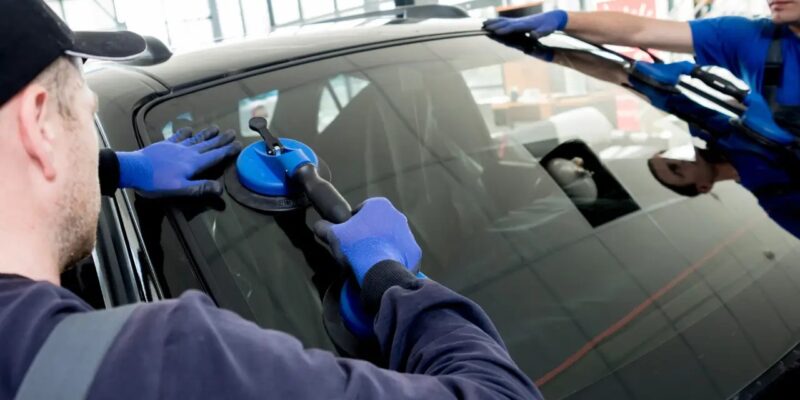A crack in your windshield can be more than just an inconvenience; it can compromise your safety and your vehicle’s integrity. But what happens when you need a windshield replacement, and you’re unsure if your insurance will cover the costs? Understanding your insurance coverage for windshield replacement can save you time, money, and stress. In this guide, we’ll break down everything you need to know about windshield replacement insurance and how it can affect drivers across the USA, including those in Tampa, FL.
What is Windshield Replacement Insurance?
Windshield replacement insurance is a coverage option within your auto insurance policy that specifically deals with repairing or replacing a damaged windshield. While some drivers may not be aware of this coverage, it can be an essential part of your policy, especially if you live in an area prone to road debris, severe weather, or other factors that could lead to windshield damage.
This type of insurance typically falls under comprehensive coverage, which is designed to cover non-collision-related damage to your vehicle. Comprehensive coverage can help pay for windshield damage caused by natural disasters, theft, vandalism, and, of course, damage.
Does Your Insurance Policy Cover Windshield Replacement?
The first step in understanding your windshield replacement insurance is to check your existing auto insurance policy. Many policies include windshield coverage, but the extent of that coverage can vary widely depending on your provider and the specific terms of your policy.
Here are some common scenarios:
- Full Coverage with No Deductible: Some insurance companies offer full coverage for windshield replacement without requiring you to pay a deductible. This means that if your windshield is damaged, the insurance company will cover the entire cost of the replacement, and you won’t have to pay anything out of pocket.
- Coverage with a Deductible: In other cases, your policy may include a deductible that you’ll need to pay before your insurance kicks in. For example, if your deductible is $250 and the cost of replacing your windshield is $400, you would pay the first $250, and your insurance would cover the remaining $150.
- Partial Coverage: Some policies may offer partial coverage, where the insurance company pays a percentage of the replacement cost, and you cover the rest.
- No Coverage: It’s also possible that your policy does not include any coverage for windshield replacement, especially if you opted for a minimal coverage plan. In this case, you would be responsible for the entire cost of the replacement.
State-Specific Laws and Insurance Coverage
Insurance laws and coverage options can vary significantly from state to state. In some states, insurance companies are required to offer full coverage for windshield replacement without a deductible. For example, Florida is one of the states with laws that are particularly favorable to drivers when it comes to windshield replacement.
In Florida, comprehensive insurance policies are required to provide full coverage for windshield replacement without applying a deductible. This means that if you’re driving in Tampa, FL, and your windshield gets damaged, you can have it replaced at no cost to you, as long as you have comprehensive coverage.
This is great news for drivers in Tampa, FL, where the combination of tropical weather and busy highways can increase the likelihood of windshield damage. Knowing that your insurance will cover the cost of replacement can give you peace of mind and encourage you to take immediate action when your windshield is damaged.
How to File an Insurance Claim for Windshield Replacement
Filing an insurance claim for auto glass replacement is usually a straightforward process, but it’s essential to follow the correct steps to ensure that your claim is processed smoothly. Here’s a step-by-step guide:
- Assess the Damage: Before filing a claim, take a close look at the damage to your windshield. If it’s a small chip or windshield crack, you might want to consider repairing it instead of replacing the entire. However, if the damage is extensive, a replacement is likely necessary.
- Review Your Policy: Check your auto insurance policy to confirm that you have coverage for windshield replacement and understand any applicable deductibles or limits.
- Contact Your Insurance Company: Get in touch with your insurance provider to report the damage and initiate the claim process. Some companies allow you to file claims online or through a mobile app, making the process even more convenient.
- Choose a Certified Repair Shop: Your insurance company may have a list of preferred or certified repair shops, but you usually have the option to choose your own. Make sure to select a shop that is certified and experienced in windshield replacement to ensure high-quality work.
- Get the Repair Done: Once your claim is approved, schedule the repair or replacement. Depending on your coverage, the repair shop may bill the insurance company directly, or you may need to pay upfront and get reimbursed.
- Follow Up: After the repair or replacement is completed, follow up with your insurance company to confirm that the claim is closed and that all payments have been made.
Tips for Maximizing Your Windshield Replacement Insurance
To make the most of your windshield replacement insurance, consider these tips:
- Regularly Review Your Policy: Insurance needs can change over time, so it’s a good idea to review your policy annually to ensure you have adequate coverage for windshield replacement.
- Consider Comprehensive Coverage: If you don’t already have comprehensive coverage, it might be worth adding it to your policy, especially if you live in an area with a high risk of windshield damage.
- Act Quickly on Damage: Don’t wait to address windshield damage. Small chips can quickly turn into large cracks that require a full replacement. Acting quickly can save you time and money.
Conclusion
Understanding your insurance coverage for windshield replacement can save you from unexpected expenses and ensure that your vehicle remains safe to drive. Whether you’re dealing with minor damage or need a full replacement, knowing your coverage options and how to file a claim can make the process much smoother.
For drivers in Tampa, FL, windshield replacement is made even easier thanks to state laws that require full coverage with no deductible. By staying informed and proactive, you can protect both your vehicle and your wallet.








Comments